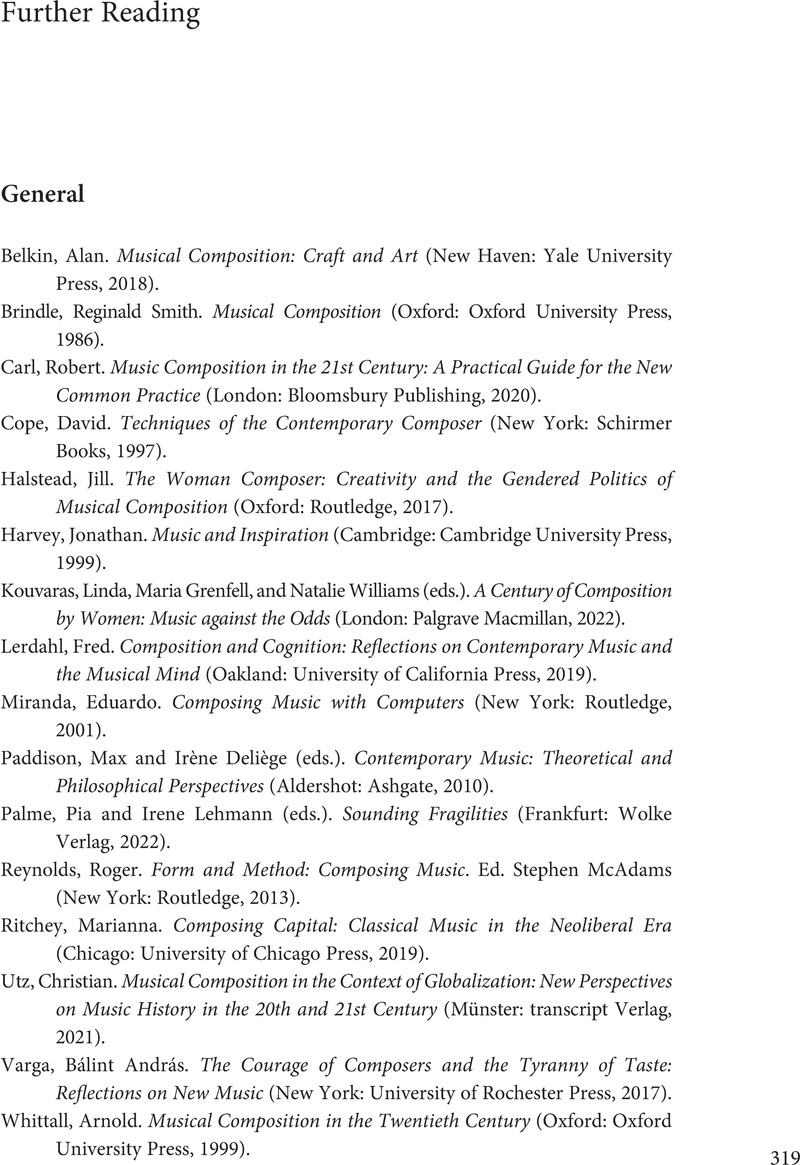Book contents
- The Cambridge Companion to Composition
- Cambridge Companions to Music
- The Cambridge Companion to Composition
- Copyright page
- Dedication
- Contents
- Figures
- Tables
- Music Examples
- Contributors
- Introduction
- Part I Creative Processes
- Part II Techniques
- Part III Styles, Conventions, and Issues
- Part IV Building a Career
- Further Reading
- Index
- References
Further Reading
Published online by Cambridge University Press: 25 May 2024
- The Cambridge Companion to Composition
- Cambridge Companions to Music
- The Cambridge Companion to Composition
- Copyright page
- Dedication
- Contents
- Figures
- Tables
- Music Examples
- Contributors
- Introduction
- Part I Creative Processes
- Part II Techniques
- Part III Styles, Conventions, and Issues
- Part IV Building a Career
- Further Reading
- Index
- References
Summary

- Type
- Chapter
- Information
- The Cambridge Companion to Composition , pp. 319 - 329Publisher: Cambridge University PressPrint publication year: 2024



